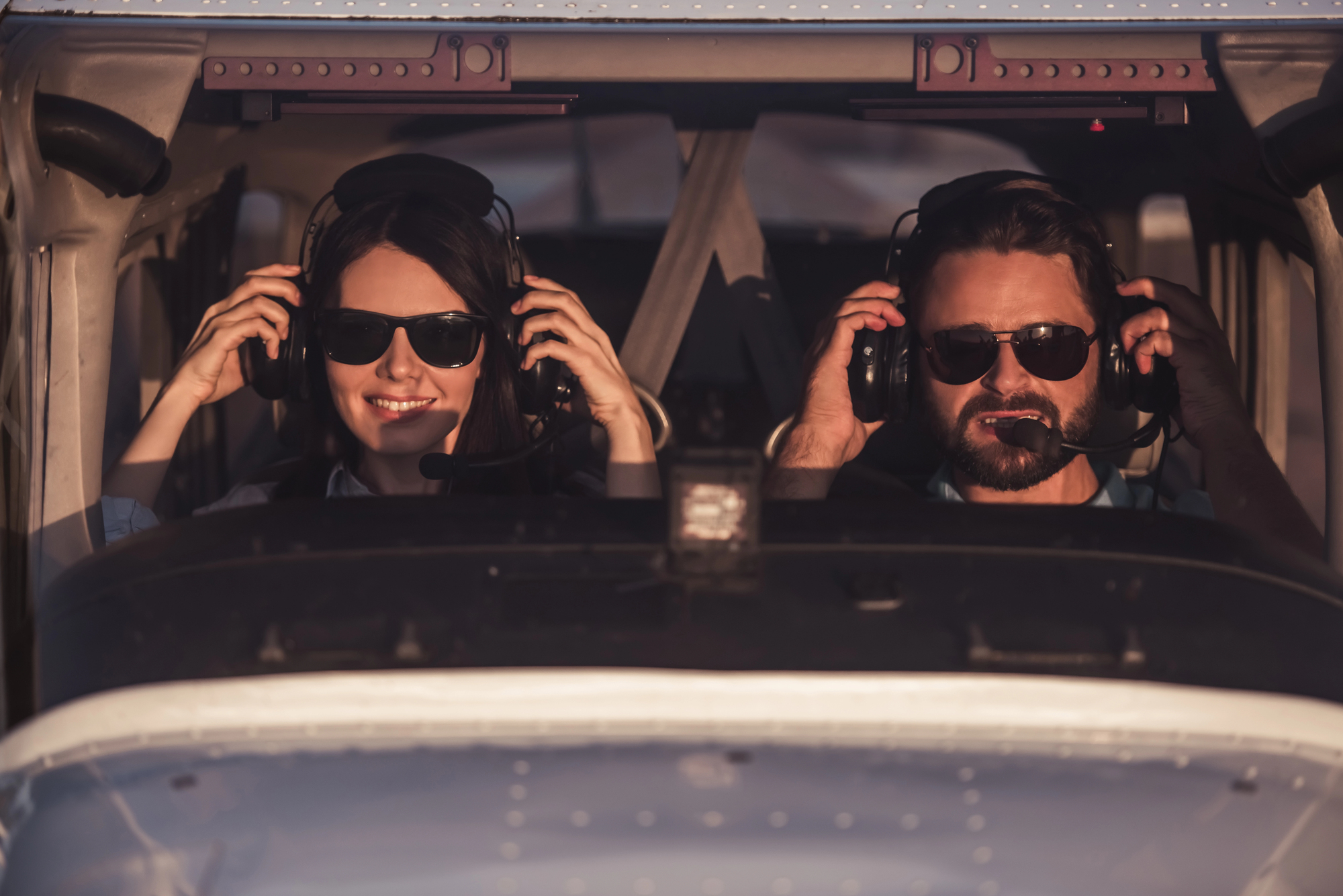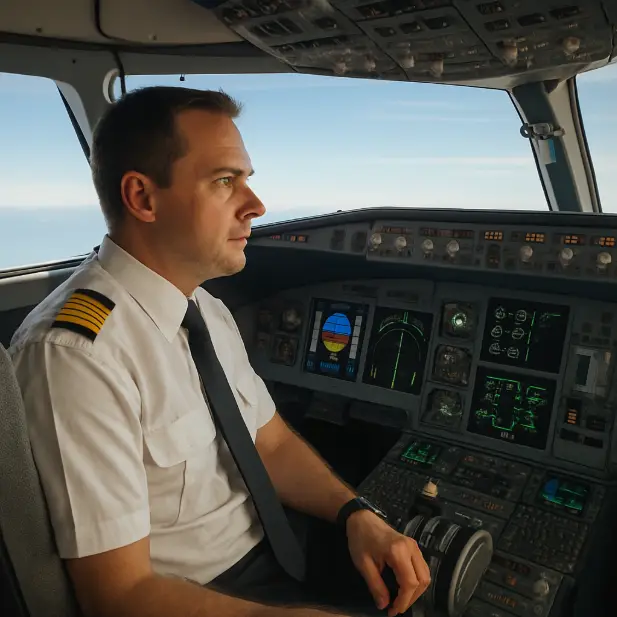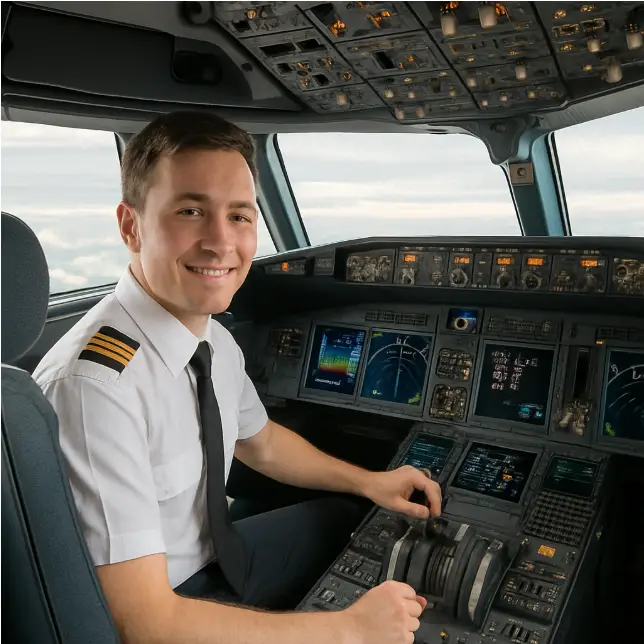Headsets, Kneeboards,& Must-Have Gear for Pilot Students

- aviatorpro_6714
Why You Need a Quality Aviation Headset
Communication is key in aviation. Whether you are communicating with air traffic control, your instructor, or other pilots, clarity is crucial. Miscommunications can lead to critical errors, which is why having a reliable headset is non-negotiable. A good aviation headset ensures that you can hear and be heard clearly, even amidst the loud noise of the aircraft. The ability to convey and receive instructions without interruption is vital for safe flight operations.
Headsets also protect your hearing. Aircraft noise can be quite loud, and prolonged exposure without proper protection can lead to hearing damage. This is not only detrimental to your health but can also affect your ability to pilot effectively. Quality pilot headphones come with noise reduction features that help mitigate this risk. Investing in a good headset is not just about comfort and clarity; it’s about preserving your hearing for a long and healthy aviation career.
Features to Look for in Pilot Headphones
When selecting headsets for pilot students, there are several features to consider
- Noise Reduction: Look for headsets with active noise reduction (ANR) technology. ANR helps reduce ambient noise, making it easier to hear communications. This feature is particularly beneficial in noisy cockpits, ensuring that important messages are not drowned out by the sounds of the engine and wind.
- Comfort: Long flights require comfortable headsets. Consider weight, ear padding, and adjustable headbands. The headset should sit comfortably for hours without causing discomfort or fatigue, allowing you to focus entirely on flying.
- Durability: Aviation headsets should withstand the rigors of frequent use. Look for sturdy construction and reliable brands. A well-built headset will endure the bumps and jolts of daily training sessions and the varied conditions of different flight environments.
- Connectivity: Some headsets offer Bluetooth connectivity, allowing for seamless integration with other devices. This can be useful for accessing navigation apps, receiving calls, or listening to audio instructions, adding a layer of convenience to your flight operations.
Kneeboards: The Pilot’s Handy Tool
Why Kneeboards Are Essential
In the cockpit, pilots need to manage multiple tasks simultaneously. A kneeboard is a practical tool that helps organize important information such as flight plans, charts, and checklists. It provides a stable writing surface and keeps all your necessary documents within easy reach. This organization is crucial in high-pressure situations where quick access to information can make a significant difference.
Kneeboards also enhance situational awareness. By having all essential documents and notes in one place, you minimize distractions and maintain focus on flying. This tool is especially beneficial during training flights when learning to juggle various tasks. A well-organized kneeboard ensures you can operate efficiently, making informed decisions without unnecessary delays.
Choosing the Right Kneeboard
When selecting a kneeboard, consider the following:
- Size and Fit: Ensure the kneeboard fits comfortably on your leg without restricting movement. The right size allows for easy access to controls and instruments, supporting smooth operation throughout the flight.
- Material: Durable materials like aluminum or tough plastics can withstand daily use. A robust kneeboard resists wear and tear, maintaining its functionality over time, even in challenging flight environments.
- Features: Some kneeboards come with built-in clips, pockets, or holders for pens, tablets, or smartphones. These additional features enhance versatility, allowing you to customize the kneeboard to suit your specific needs and preferences.
- Flexibility: Look for kneeboards that can be adjusted or customized to your specific needs. The ability to adapt the kneeboard for different flight scenarios ensures it remains a valuable tool throughout your training and beyond.
How to Use Your Headset and Kneeboard Effectively
Setting Up Your Headset
Before your flight, ensure your headset is properly adjusted for comfort and functionality:
- Fit: Adjust the headband so the ear cups sit snugly over your ears. This ensures effective noise cancellation and clear audio reception.
- Microphone: Position the microphone close to your mouth for clear communication. Proper placement prevents audio distortion and ensures your transmissions are heard accurately.
- Volume: Test and adjust the volume settings to ensure you can hear communications clearly without discomfort. The right balance allows you to stay alert and responsive to all necessary communications.
Organizing Your Kneeboard
To make the most of your kneeboard, organize your materials efficiently:
- Flight Plan: Place your flight plan in a prominent position for easy reference. This helps you stay on course and manage your time effectively during the flight.
- Checklists: Have your pre-flight and in-flight checklists readily accessible. Quick access to checklists ensures you can perform essential procedures accurately and promptly.
- Navigation Charts: Keep charts handy for quick consultation during flight. Easy access to navigation information supports precise route adjustments and decision-making.
- Writing Tools: Ensure you have pens or pencils secured to jot down notes or instructions. Having writing tools at hand is crucial for recording information efficiently, without losing focus on flying.
Tips for Maintaining Your Gear
Caring for Your Headset
Proper maintenance of your aviation headset will extend its lifespan and ensure optimal performance:
- Cleaning: Regularly clean the ear pads and microphone with a soft, damp cloth. This prevents dirt build-up that could affect audio quality and hygiene.
- Storage: Store your headset in a protective case when not in use to prevent damage. Proper storage minimizes exposure to elements that could degrade the headset over time.
- Battery Management: If your headset uses batteries for noise reduction, carry spares and replace them as needed. Keeping fresh batteries ensures the noise reduction features work effectively throughout your flights.
Keeping Your Kneeboard in Good Condition
- Cleaning: Wipe down your kneeboard after each use to remove dust or debris. Clean surfaces ensure readability and prevent wear on documents.
- Organization: Periodically review and organize your documents to keep the kneeboard clutter-free. A tidy kneeboard supports efficient information retrieval and reduces stress in flight.
- Inspection: Check for any signs of wear and tear, and make necessary repairs to ensure it remains functional. Regular inspections help catch small issues before they become major problems, prolonging the life of your kneeboard.
Conclusion
For pilot students, investing in quality headsets and kneeboards is a wise decision that enhances both safety and efficiency during flight training. These tools not only aid in learning and communication but also build habits that will serve you well throughout your aviation career.
By choosing the right gear and maintaining it well, you can focus on honing your flying skills and achieving your aviation goals. Remember, the right tools not only support your learning but also prepare you for a successful career in aviation. Safe flying! With dedication and the right equipment, the skies are yours to explore.



